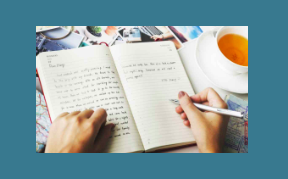Week 10
- kjgraham2000
- Jan 5, 2021
- 3 min read
Updated: May 15, 2021
I began this week by researching pre-established journals. I have also really liked the idea of habit journals.

A habit journal is a tool with the intention of de-cluttering your day. It has a structured format to help you be productive and keep good habits going for longer or to achieve goals. You are able to track progress daily, monthly or yearly. Habit journals can be customisable and genuinely include a lot of colour and graphics.
Habit journals can be customisable where you can track anything you like. You can buy pre structured books where habits are recommended or create your own on blank paper. It is common for people to track:
- Money spending
- Water intake
- Calorie intake
- Hair washing
- Self Care
- Etc.
It is said that if you perform an act consistently for 30 days it then becomes a habit.
A personality quiz may be an option for my project, the idea I had for this is similar to what used to be in magazines. Here is an example below:

I then put all my focus into creating content for my interim presentation. My results follow:
Earlier this year my younger cousin was diagnosed with the mental health issue which is known as Pure OCD or Pure O. I wanted to base my project around this issue which is so close to my heart and potentially create a new copying method for sufferers.
So far, I have completed both primary and secondary research. I have read multiple books on the issue along with dozens of articles to help gauge how OCD affects a person’s quality of life, and in-depth details about the recovery process.
Along with secondary research I have conducted multiple methods of first-hand research. I have joined a number of social media support groups and from there I have managed to source individuals who were eager to complete workbooks that I had produced specific to my project. I think the key stage of my research process was when I conducted interviews over zoom, this let me see the illness from a different perspective.
The most valuable insight that I took from the research stage was how effective writing down and documenting thought and feeling can be for the mind. This method of relief goes hand in hand with the treatment plan of cognitive behavioural therapy or commonly known as CBT.
CBT is commonly practised with a patient and a therapist working together to develop an alternative way of thinking and to distinguish the intrusive thoughts produced by OCD and reality. Homework is set as part of this process in a diary form. I also discovered that CBT can be practiced alone. Some people may not want the help of a therapist as the waiting list is currently at 18 weeks for an NHS physiatrist, some may want to act quicker than that, or in some cases the sufferer may be embarrassed speaking about their problems. So, practising CBT in the comfort of their own home may be appealing to them.
After taking all of the information from my research stage, I conducted some idea generation exercises such as visualising ideas and mind mapping. At the back of this I now aim to produce a joint diary and journal with the theme of wellbeing. Along with sections that include the CBT method. CBT usually takes 7-8 weeks, but OCD doesn’t magically disappear after them 2 months are completed. Therefore, I would like to make this diary so that the user can work on their mental stability for a prolonged period of time.
I understood that no two people’s recovery process are identical so I was thinking that each booklet could be bespoke to the individual. This could potentially be achieved by initially starting the process on an app which identifies your recovery requirements then at the end producing a physical booklet.
I have been looking for inspiration for my project through habit journals and pre-established diaries. I would prefer my booklet to have a fun aspect to it, it will not be filled with the bog-standard linier charts and graphs. But replaced with visuals and graphics to keep it engaging to the user.
As for the CBT aspect, it is common for the patient to experience a relapse so I think a nice feature would be for the CBT concept to be attachable so that the user has access to the help when necessary, this could possibly be done through magnets or in the form of a white board, but I will work out the finer details of that in due course.
Thank you for listening, is there any questions?






















Comments